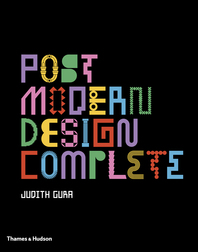Houses by three Modernist masters ' Breuer, Neutra, and Schindler ' present different challenges to new architects.
Neutra by the sea
Rudolph Schindler and Richard Neutra were “Southern California’s favorite architectural couple,” writes historian Barbara Mac Lamprecht, “Schindler playing id to Neutra’s superego; Neutra’s Apollo to Schindler’s Dionysus; the former the verbose go-getter, the latter an articulate hippie.” Two houses recently renovated in California — the 1934 Sten-Frenke House in Santa Monica by Neutra, and a 1940 spec house in Inglewood by Schindler — both seem inexorably to follow the legacy, or the idea of the legacy, of their separate creators.
Click on the slide show icon to see more images.
Both Viennese, the architects met when Schindler, five years older, was finishing his studies with Adolf Loos. Neutra’s path to Los Angeles followed Schindler’s: Both would pass through Chicago and work alongside Frank Lloyd Wright. When Neutra arrived in California in 1926, the two lived and worked together at Schindler’s Kings Road House. Rough concrete slabs and untreated wood trim define its raw aesthetic, and interlocking wings suggest a communal, utopian setting.
That arrangement would not last. In the end, Neutra would prove to be more professionally adroit and would go on to earn international fame and appreciation. Schindler, eternally contrarian, toiled away in relative anonymity. By 1932, the two men were no longer speaking.
Neutra’s 1934 Sten-Frenke House was his first major commission outside the shadow of Schindler. Anna Sten was a Ukrainian silent film actress, discovered in Berlin. She was first called the “Russian Garbo,” but with the advent of the talkie (her English was wanting), she was known as “Goldwyn’s Folly.” On her arrival in Los Angeles, her husband, Dr. Eugene Frenke, a Russian film producer, immediately commissioned fellow- émigré Neutra to design a house in Santa Monica.
On a sloping site close to the Pacific, the house was practically isolated when first built. Today, it is hemmed in on all sides by a lush tropical landscape, a row of other opulent properties, and a gigantic apartment building that looms above its rear facade. Its 2,400 square feet contain living, dining, and kitchen space on the ground floor, with two bedrooms and a guest room above. Throughout, the walls were wrapped in plywood wainscoting that turns and steps down (in Loosian fashion) to become bookshelves, benches, or bedding. A second-floor terrace and ground-floor patio take advantage of the benevolent climate outside.
In other places, Neutra’s hand was less clear, owing to opposition from Sten, who was less enthusiastic about Modern architecture than her husband. Her predilection for pink-and-green-tiled bathrooms prevailed over the smooth panes of gray glass Neutra preferred.
Overall, Neutra’s serene and elegant composition, a collection of clean, white volumes, easily slips into the label “International Style,” but as a very skilled example of that movement. Ribbon windows, well-proportioned volumes, and an asymmetric plan define the house’s machine aesthetic.
Also like much of Modernism, that image is deceptive. The ribbon windows indicate a “free facade” — following Le Corbusier’s “five points,” in which the facade and plan of a building are both liberated by the use of a recessed steel or concrete structure. Sten and Frenke could not afford a steel or concrete structure, so Neutra (like Breuer after him) made do with the American balloon frame. He used thin structural wooden posts around the load-bearing exterior, but hid them, making them look like window mullions.
“This house isn’t honest and pure; it’s accommodating and expedient,” says James Biber of Pentagram Architects in New York. In 2002, Biber began renovating the structure, working with Los Angeles—based Marmol Radziner, which acted as local representative and contributed its expertise from other Neutra renovations. The team encountered a structure that was weathered but intact, having had the same owner for several decades.
Biber’s approach was to accommodate his client, a film producer, while at the same time considering Neutra’s design intentions without abandoning those of the rebellious Sten. The renovation acknowledged not one version of the house, but its many versions, simultaneously. This meant keeping the pink-and-green tile while expanding the small bathrooms to accommodate the new clients’ wishes. In other areas, Biber interpreted Neutra’s intent, rather than following it literally. Neutra’s plywood wainscoting — “It would have been exciting back then, but today it looked cheap,” says Biber — was replaced with a darker, more opulent redwood. He added built-in seating on the ground floor, and expanded the kitchen. In all, Biber’s renovation, like Mori’s, interprets, rather than repeats, history.
But Biber couldn’t control what would happen next. In 2009, the house was put up for sale again. The new owners hired designer Mark Haddawy, who has restored a series of significant Modernist homes in and around Los Angeles. He says the clients were hoping for a more historically accurate version of the house.
The new design, which will be completed this summer, discards most of Biber’s interventions. This process began with replacing Biber’s omnipresent redwood veneer with fir plywood, according to Neutra’s original specifications. “The redwood was very distracting,” says Haddawy. “Going back to the plywood was a better decision aesthetically and historically.”
In other places, however, the decisions seem less motivated by accuracy than by preference. The bathrooms, kept by Biber in acknowledgment of Sten, are being refaced in terrazzo, a material Neutra used in other projects.
In all, the new renovation attempts to give the image of history. Salvaged period fixtures — light switches, lamps, plumbing — are being installed throughout the house. Haddawy is replacing a new wooden floor, installed by Biber, with another new wooden floor that attempts to look 70 years old; pre-aged, the planks are willfully uneven, and are covered in a thin black wash that emulates a patina. The new renovation moves unerringly toward the intent of Neutra — or at least a certain tasteful memory of it — which, for the exacting, controlling architect, seems appropriate.



Post a comment to this article
Report Abusive Comment